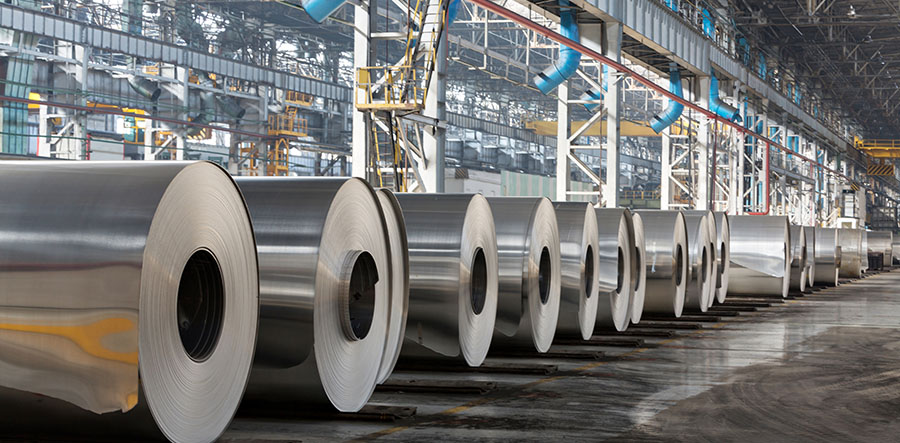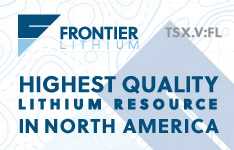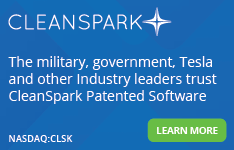After a rollercoaster 2020 for automakers, 2021 is creating some headaches for the industry. Currently hindered by the global chip shortage, automakers' woes are piling up amid a growing rubber shortage that is running up the price of the material and depleting buffer levels of inventory across the sector.
On top of that, the overwhelming transition towards electric vehicles is proving to be a make or break shift for automakers as they struggle to balance future gas engine vehicle output and the level of production necessary to meet the rising EV demand.
Related ETF & Stocks: First Trust NASDAQ Global Auto Index Fund (CARZ), General Motors Company (GM), Ford Motor Company (F), The Goodyear Tire & Rubber Company (GT), Bridgestone Corporation (BRDCY)
The Chip Shortage Has Yet to Subside
The global semiconductor shortage has continued to hinder the performance of major automakers worldwide. Big players such as Ford and General Motors have had to institute temporary factory shutdowns within the last month. Some analysts project the shutdowns will cost the global automotive industry $60.6 billion in revenue this year.
To receive all of MRP's insights in your inbox Monday–Friday, follow this link for a free 30-day trial. This content was delivered to McAlinden Research Partners clients on May 6.
As MRP has noted, the shortage could result in 1.3 million fewer vehicles manufactured this year. Global consulting firm AlixPartners holds a more bearish sentiment, forecasting a production drop of 2.5 million vehicles.
As it becomes more and more apparent there is no quick fix for the chip crisis, major chip manufacturers are striving to prioritize the automotive industry. MRP previously mentioned that Intel CEO Pat Gelsinger is planning to ramp up production to bring more chips to automakers within six to nine months.
Now, the U.S. Commerce Department has called upon Taiwan Semiconductor Manufacturing Co. (TSMC) to prioritize U.S. automakers to ease their chip shortages. The Commerce Department is holding a "high level" meeting with U.S. automakers next week to address these concerns, which will hopefully find some solutions to alleviate the industry's worries.
MRP recently re-affirmed our LONG Semiconductor theme.
A Rubber Shortage Poses a Threat in the Near Future
As if the automotive industry needed anything else on its plate, a natural rubber shortage poses an additional threat to the production of tires.
Natural rubber is harvested off of trees, so the material is greatly affected by weather related changes. In 2019, a leaf disease began to ravage major rubber producing countries like Thailand and Indonesia, depleting their levels of supply. In addition, lost automotive production resulting from the COVID-19 pandemic gave farmers little incentive to plant trees. It takes six to seven years for natural rubber trees to mature, so now that demand has come surging back, a rubber deficit is on the horizon.
Due to this, industry watchers are expecting this year to be the beginning of a cyclical, multiyear rally for the price of rubber. Through the first three months of 2021, the price of natural rubber rose 58%. Natural rubber reached a four-year high of $2/kg at the end of February, and some industry executives expect that number to jump to $5/kg in the next five years.
Bloomberg recently reported that excessive stockpiling in China has only added to the scarcity. China sourced over 5 million tons of the material in 2020, compared to the U.S. at 0.85 million tons, a worrying sign for domestic automakers.
Recent interviews with executives from Goodyear and Bridgestone suggest that domestic tire manufacturing is running as scheduled with a rubber supply that remains solid, for now. However, supply is very likely to tighten further into the year and should be monitored closely by investors.
Transitioning to EVs is More Complex Than Expected
To muddy the waters even further, the overwhelming transition toward a clean energy future has forced the automotive industry to ramp up the production and development of electric vehicles (EVs). The EV market is projected to reach $1.9 trillion by 2028, and every major automaker is trying to grab a share. The sudden shift leaves automakers scrambling to project how many new EVs they should manufacture, and how relevant gas-powered vehicles will remain in the future.
Big players have made some recent announcements to promote a cleaner transportation. General Motors has planned to phase out all of its gas-powered vehicles by 2035. Ford and BMW have positioned themselves to benefit from the transition by investing $130 million into a battery power startup, solidifying themselves in the EV market.
This projection could ultimately make or break some automotive companies. Bloomberg has said if the EV market climbs to 30% by 2030, it would leave 40 million excess vehicles for gas-powered cars, or roughly 200 unneeded factories. The transition toward EVs won't go up in a straight line either, as Business Insider recently reported 20% of EV owners in California have switched back to gas-powered cars, mostly due to inadequate charging infrastructure.
In short, if companies bet too big on EVs they will be left with excess inventory and a loss in revenue. If companies fail to invest enough, they will miss out on the huge profits of a massive shift in the industry.
Conclusion
The semiconductor shortage has no end in sight, and natural rubber's increasing scarcity is expected to hinder the industry even more. Trying to time the adoption of EVs to maximize profits proves to be an impossible task and only adds to the headwinds. The auto industry got through a tumultuous 2020 looking forward to 2021, but it appears this year will cause just as many headaches for automakers across the globe.
Investors can gain exposure to the automotive industry via First Trust NASDAQ Global Auto Index Fund (CARZ).



Originally published May 6, 2021.
 McAlinden Research Partners (MRP) provides independent investment strategy research to investors worldwide. The firm's mission is to identify alpha-generating investment themes early in their unfolding and bring them to its clients' attention. MRP's research process reflects founder Joe McAlinden's 50 years of experience on Wall Street. The methodologies he developed as chief investment officer of Morgan Stanley Investment Management, where he oversaw more than $400 billion in assets, provide the foundation for the strategy research MRP now brings to hedge funds, pension funds, sovereign wealth funds and other asset managers around the globe.
McAlinden Research Partners (MRP) provides independent investment strategy research to investors worldwide. The firm's mission is to identify alpha-generating investment themes early in their unfolding and bring them to its clients' attention. MRP's research process reflects founder Joe McAlinden's 50 years of experience on Wall Street. The methodologies he developed as chief investment officer of Morgan Stanley Investment Management, where he oversaw more than $400 billion in assets, provide the foundation for the strategy research MRP now brings to hedge funds, pension funds, sovereign wealth funds and other asset managers around the globe.
|
|
Sign Up |
Disclosure:
1) McAlinden Research Partners disclosures are below.
2) The following companies mentioned in this article are billboard sponsors of Streetwise Reports: None. Click here for important disclosures about sponsor fees. The information provided above is for informational purposes only and is not a recommendation to buy or sell any security.
3) Statements and opinions expressed are the opinions of the author and not of Streetwise Reports or its officers. The author is wholly responsible for the validity of the statements. The author was not paid by Streetwise Reports for this article. Streetwise Reports was not paid by the author to publish or syndicate this article. Streetwise Reports requires contributing authors to disclose any shareholdings in, or economic relationships with, companies that they write about. Streetwise Reports relies upon the authors to accurately provide this information and Streetwise Reports has no means of verifying its accuracy.
4) This article does not constitute investment advice. Each reader is encouraged to consult with his or her individual financial professional and any action a reader takes as a result of information presented here is his or her own responsibility. By opening this page, each reader accepts and agrees to Streetwise Reports' terms of use and full legal disclaimer. This article is not a solicitation for investment. Streetwise Reports does not render general or specific investment advice and the information on Streetwise Reports should not be considered a recommendation to buy or sell any security. Streetwise Reports does not endorse or recommend the business, products, services or securities of any company mentioned on Streetwise Reports.
5) From time to time, Streetwise Reports LLC and its directors, officers, employees or members of their families, as well as persons interviewed for articles and interviews on the site, may have a long or short position in securities mentioned. Directors, officers, employees or members of their immediate families are prohibited from making purchases and/or sales of those securities in the open market or otherwise from the time of the decision to publish an article until three business days after the publication of the article. The foregoing prohibition does not apply to articles that in substance only restate previously published company releases. As of the date of this article, officers and/or employees of Streetwise Reports LLC (including members of their household) own securities of Ford Motor Company, a company mentioned in this article.
McAlinden Research Partners:
This report has been prepared solely for informational purposes and is not an offer to buy/sell/endorse or a solicitation of an offer to buy/sell/endorse Interests or any other security or instrument or to participate in any trading or investment strategy. No representation or warranty (express or implied) is made or can be given with respect to the sequence, accuracy, completeness, or timeliness of the information in this Report. Unless otherwise noted, all information is sourced from public data.
McAlinden Research Partners is a division of Catalpa Capital Advisors, LLC (CCA), a Registered Investment Advisor. References to specific securities, asset classes and financial markets discussed herein are for illustrative purposes only and should not be interpreted as recommendations to purchase or sell such securities. CCA, MRP, employees and direct affiliates of the firm may or may not own any of the securities mentioned in the report at the time of publication.
Charts and graphs provided by McAlinden Research Partners.






























































